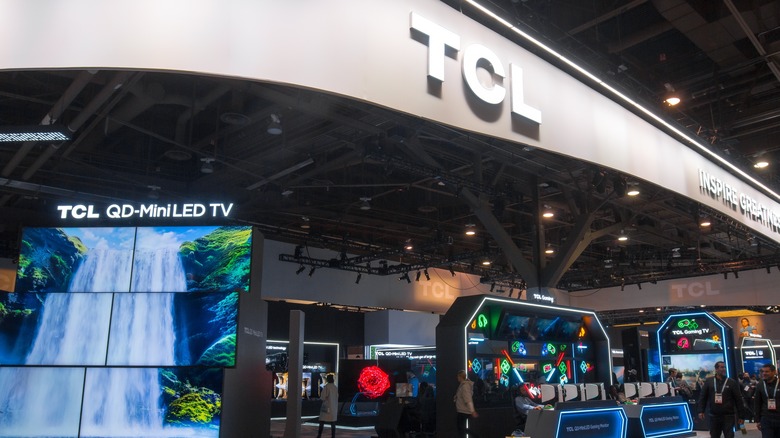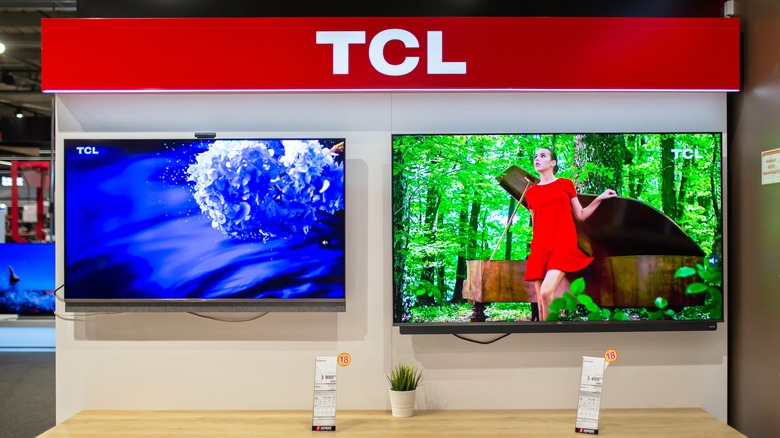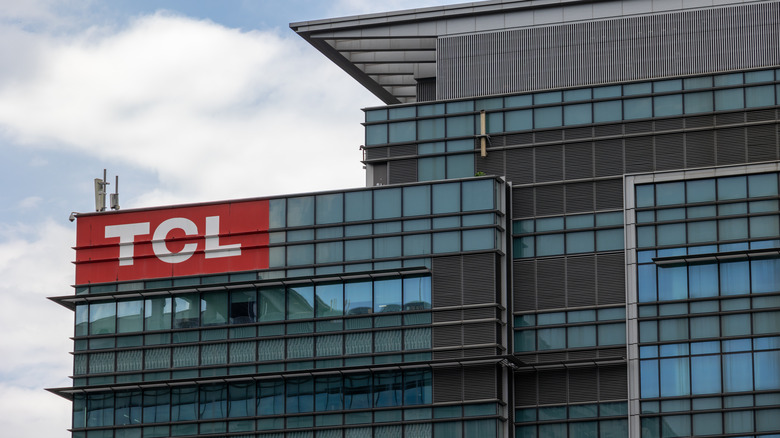Who Owns TCL TVs And Where Are They Made?
TCL may be a new entrant to the United States TV market, but it's already giving more established brands a hard time with its solid lineup of competitively-priced products. In the third quarter of 2024, TCL became the second-largest TV manufacturer in the country after its North American TV shipments increased by 27.5% compared to the same quarter in the previous year and 8.2% for the first nine months of the year.
TCL is owned by the TCL Technology Group Corporation, a multinational company that started out by producing audio cassette tapes in Huizhou in the Guangdong province of China. The company was originally named TTK when it launched in 1981, but a lawsuit by electronics firm TDK forced the company to rebrand to TCL Corporation in 1986. The three letters stand for "Telephone Communication Limited."
The rebranding sparked a change in the company's focus to manufacturing and selling telephone sets and other electronics. In 1991, TCL joined the TV market with the introduction of its first television sets. Throughout the rest of the decade, it worked on advancing its TV and mobile phone ventures. After the turn of the century, TCL penetrated overseas markets, coming to North America in 2013. The company quickly found success with the expansion of its product offerings, and in 2020, TCL Corporation changed its name to TCL Technology. Although TCL has a North American headquarters in Irvine, California, the company does not manufacture its television units for the U.S. market on this side of the Pacific. The bulk of supply for American consumers comes from TCL's primary TV manufacturing facility in Shenzen.
Where else are TCL TVs made?
Since 2010, TCL has invested over $450 billion in this mega-facility that houses different production lines for its various display products. TCL chooses to predominantly make its TVs in its homeland to cut down production costs, enabling the company to sell its TVs at cheaper price points. TCL has plants spread around both hemispheres, though. The company also operates manufacturing and assembly facilities in Australia, Brazil, India, Mexico, Pakistan, Poland, and Vietnam.
In 2014, TCL bought Sanyo Electronic's Mexican plant in Tijuana, Baja California. This facility now produces TCL-branded television units in various sizes to be sold in the U.S. market. The company also has two factories in the Quang Ninh Province of Vietnam. One makes smart audio products, while the other produces television sets for export to America and Europe. TCL's factory in Tirupati, Andhra Pradesh, India, also produces TVs for the U.S. market. While products made on the Mexico, Vietnam, and India TV assembly lines are exported to other countries, TCL's plants located elsewhere only make TVs for their respective regions.
Why TCL TVs stand out from the competition
TCL's strong TV sales in the U.S. seem more impressive when you consider that the Chinese manufacturer is far younger than its rivals. TCL was only founded in 1981, while other industry giants were established decades prior. To put that into context, Samsung — which topped our list of TV brands Ranked By Customer Satisfaction — had an early start in 1938. LG Electronics launched in 1947, while Sony was founded in 1946.
These other brands had plenty of time to establish a footing in the U.S. market before TCL arrived in 2013. Sony started selling televisions stateside in the 1960s, and LG joined the segment in the 1980s under its former brand name, Goldstar. In 1995, it changed its name to LG Electronics. As for Samsung, though its U.S. subsidiary was formed in 1978, it didn't introduce its first TV set until 1998.
When you take a closer look at TCL's product offerings through the years, it becomes apparent how the company made such an impressive climb in a short period. The brand has been consistently delivering TVs that are so rich in premium features that they consistently bag awards and receive hype at electronics shows in the U.S. and abroad. Additionally, being able to offer its TVs at a competitive price point helps consumers know they are getting more bang for their buck.


